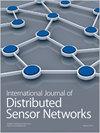Improved Population Intelligence Algorithm and BP Neural Network for Network Security Posture Prediction
IF 2.5
4区 计算机科学
Q3 COMPUTER SCIENCE, INFORMATION SYSTEMS
引用次数: 1
Abstract
To address the problems of low prediction accuracy and slow convergence of the network security posture prediction model, a population intelligence optimization algorithm is proposed to improve the network security posture prediction model of the BP neural network. First, the adaptive adjustment of the two parameters with the increase of iterations is achieved by improving the inertia weights and learning factors in the particle swarm optimization (PSO) algorithm so that the PSO has a large search range and high speed at the initial stage and a strong and stable convergence capability at the later stage. Secondly, to address the problem that PSO is prone to fall into a local optimum, the genetic operator is embedded into the operation process of the particle swarm algorithm, and the excellent global optimization performance of the genetic algorithm is used to open up the spatial vision of the particle population, revive the stagnant particles, accelerate the update amplitude of the algorithm, and achieve the purpose of improving the premature problem. Finally, the improved algorithm is combined with the BP neural network to optimize the BP neural network and applied to the network security posture assessment. The experimental comparison of different optimization algorithms is applied, and the results show that the network security posture prediction method of this model has the smallest error, the highest accuracy, and the fastest convergence, and can effectively predict future changes in network security posture.基于改进群体智能算法和BP神经网络的网络安全态势预测
针对网络安全态势预测模型预测精度低、收敛慢的问题,提出了一种群体智能优化算法来改进BP神经网络的网络安全态势预报模型。首先,通过改进粒子群优化算法中的惯性权重和学习因子,实现了两个参数随着迭代次数的增加而自适应调整,使粒子群优化在初始阶段具有较大的搜索范围和较高的速度,在后期具有较强且稳定的收敛能力。其次,为了解决粒子群算法容易陷入局部最优的问题,在粒子群算法的运算过程中嵌入了遗传算子,利用遗传算法优异的全局优化性能,打开了粒子群的空间视野,复活了停滞的粒子,加快了算法的更新幅度,并达到改善早熟问题的目的。最后,将改进后的算法与BP神经网络相结合,对BP神经网络进行优化,并将其应用于网络安全态势评估。应用不同优化算法进行实验比较,结果表明,该模型的网络安全态势预测方法误差最小、精度最高、收敛最快,能够有效预测未来网络安全态势的变化。
本文章由计算机程序翻译,如有差异,请以英文原文为准。
求助全文
约1分钟内获得全文
求助全文
来源期刊
CiteScore
6.50
自引率
4.30%
发文量
94
审稿时长
3.6 months
期刊介绍:
International Journal of Distributed Sensor Networks (IJDSN) is a JCR ranked, peer-reviewed, open access journal that focuses on applied research and applications of sensor networks. The goal of this journal is to provide a forum for the publication of important research contributions in developing high performance computing solutions to problems arising from the complexities of these sensor network systems. Articles highlight advances in uses of sensor network systems for solving computational tasks in manufacturing, engineering and environmental systems.

 求助内容:
求助内容: 应助结果提醒方式:
应助结果提醒方式:


